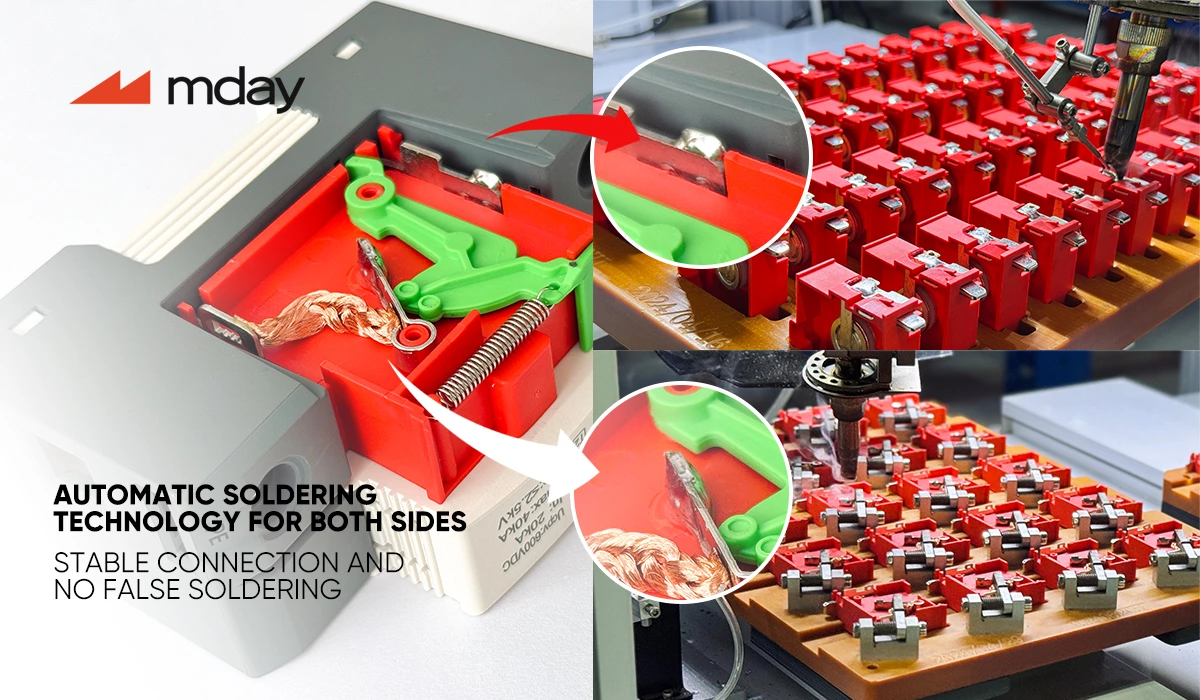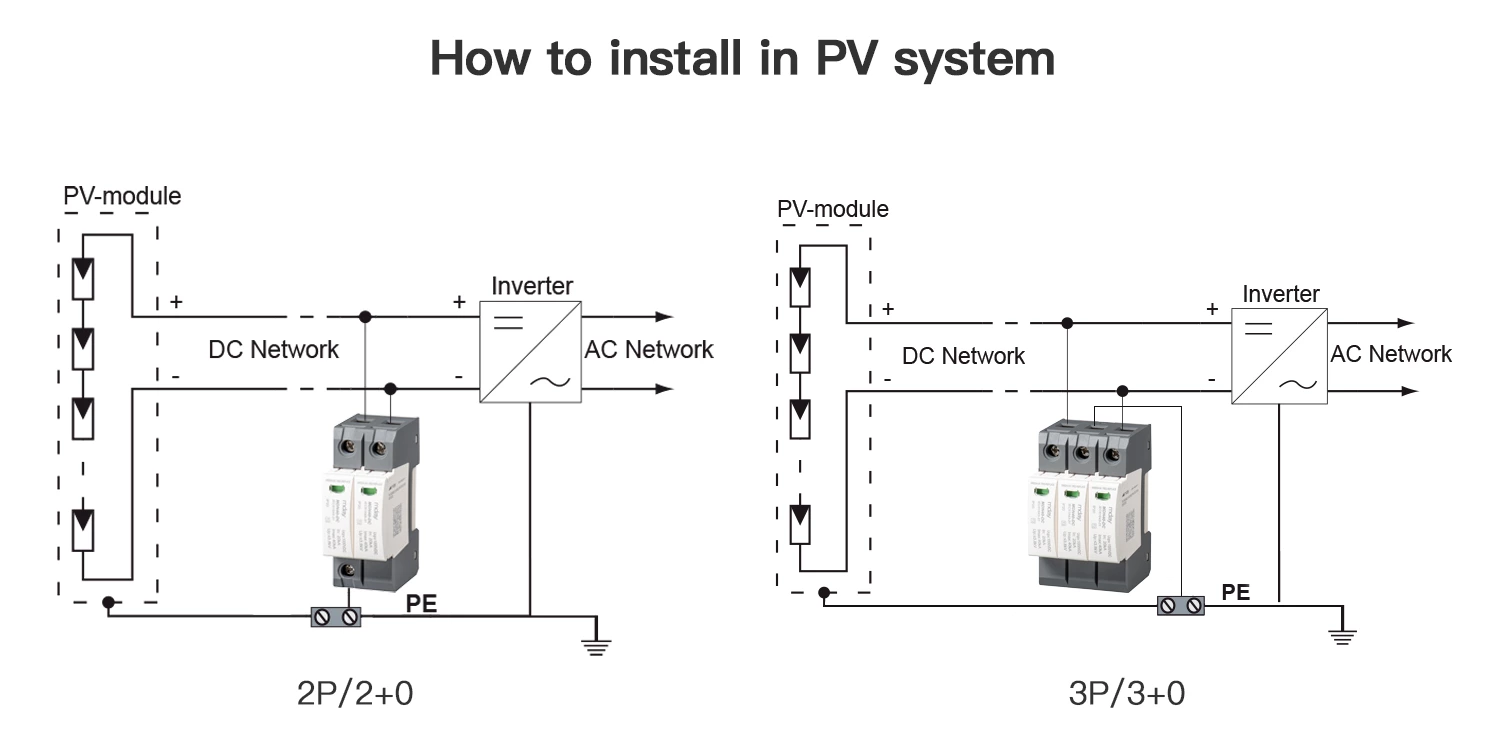
How to Size a Surge Protection Device (SPD) for Your Electrical System
In today’s interconnected world, protecting sensitive electronic equipment from power surges is critical for businesses and homeowners alike. Surge Protection Devices (SPDs) act as the first line of defense against voltage spikes caused by lightning strikes (which can exceed 100,000 volts), grid switching, or electrical faults. However, selecting the right SPD for your needs requires careful consideration of several factors. In this guide, we’ll walk you through the key steps to properly size a surge protection device.
Step 1: Understand the Basics of SPDs
SPDs are categorized based on their installation location and protection level:
- Type 1 (Class I): Installed at the main service entrance to protect against direct lightning strikes. Typically rated for 10/350 μs impulse currents (e.g., 25kA per phase for residential use).
- Type 2 (Class II): Used at sub-distribution panels to safeguard against residual surges and internal switching transients. Common ratings include 8/20 μs waveforms with In ≥ 20kA for commercial buildings.
- Type 3 (Class III): Point-of-use devices for sensitive equipment like computers or servers, often rated for 3–5kA (8/20 μs).
Choosing the right type depends on your system’s vulnerability and the level of protection required.

Step 2: Determine the System Voltage
SPDs must match the electrical system’s voltage to function safely. For example:
- Single-phase systems: Common voltages include 120V (North America), 230V (Europe/Asia), and 240V (Australia).
- Three-phase systems: Typically 400V (EU), 480V (US Industrial), or 415V (Asia-Pacific).
Check your system’s nominal voltage and ensure the SPD’s maximum continuous operating voltage (Uc) exceeds the system’s highest expected voltage by at least 20%. For example, a 230V system should use an SPD with Uc ≥ 275V.

Step 3: Calculate the Surge Current Requirement
The nominal discharge current (In) and maximum discharge current (Imax) indicate how much surge energy an SPD can handle:
- Lightning-prone areas (Type 1): Use SPDs with Imax ≥ 25kA (10/350 μs) to withstand direct strikes.
- General commercial use (Type 2): Select SPDs with In ≥ 20kA (8/20 μs) for sub-panels.
- Sensitive electronics (Type 3): Devices like servers may require 3–10kA (8/20 μs).
Note: According to IEC 61643-11, SPDs must withstand at least 15 surge events at their rated current.
Step 4: Evaluate the Risk Level
Assess the likelihood of surges in your location using industry data:
- High-risk environments (e.g., regions with >30 thunderstorm days/year or industrial facilities with heavy machinery) require SPDs with Imax ≥ 40kA and multi-stage protection.
- Low-risk environments (e.g., urban offices in areas with <10 thunderstorm days/year) may use SPDs with In ≥ 15kA.
Step 5: Check Compatibility with Existing Systems
Ensure the SPD’s short-circuit current rating (SCCR) aligns with your electrical panel’s fault current capacity. For example:
- Most commercial panels have an SCCR of 10kA to 65kA; choose an SPD with an SCCR equal to or higher than your panel’s rating.
- Verify compatibility with your grounding system (e.g., TN-S, TT, or IT systems per IEC 60364) and circuit breakers (e.g., 10A–63A for Type 2 SPDs).
Step 6: Prioritize Standards and Certifications
Look for SPDs compliant with international standards such as:
- IEC 61643-11 (global standard for SPDs, covering performance and testing).
- UL 1449 4th Edition (North America, mandates let-through voltage ≤ 330V for Type 2 devices).
- EN 61643-11 (European Union, requires fireproof housing for SPDs in public buildings).
Certifications from TÜV Rheinland or Intertek ensure the device meets safety and performance benchmarks.
Market Insight: Over 75% of industrial facilities prioritize UL/IEC-certified SPDs to comply with insurance policies and local regulations.
Step 7: Plan for Maintenance and Monitoring
- Lifespan: Most SPDs degrade after 5–10 years or 15–20 surge events. Modular designs allow replacing only the worn-out components, saving 30–50% in long-term costs.
- Monitoring: Advanced SPDs feature LED status indicators or IoT-enabled sensors (e.g., RS-485 communication) to send real-time alerts via building management systems (BMS).
Industry Data: Facilities with monitored SPDs report 40% fewer unplanned outages compared to those relying on passive protection.
Common Mistakes to Avoid
- Undersizing the SPD: A low kA rating may lead to failure during a major surge. For example, using a 10kA SPD in a lightning-prone area (requiring ≥25kA) increases equipment damage risk by 60% (per NFPA 780).
- Ignoring Installation Location: Type 1 SPDs must be installed within 2 meters of the main distribution panel for optimal protection.
- Overlooking Voltage Compatibility: A 230V system using a Uc = 250V SPD (instead of 275V) may fail during voltage fluctuations exceeding +10%.
Why Proper Sizing Matters
- Equipment Longevity: Properly sized SPDs reduce equipment failure rates by 80% (IEEE Surge Protection Committee).
- Safety Compliance: Non-compliant SPDs can void insurance claims; 90% of insurers require UL/IEC certification.
- Business Continuity: Power surges cost businesses $26 billion annually in downtime and repairs (EMC Insurance).
Need Help Choosing the Right SPD?
As a trusted supplier of high-quality surge protection solutions, [Your Company Name] offers:
- Tailored SPD Kits: Pre-configured for residential (e.g., 25kA Type 1+2 hybrid), commercial (e.g., 40kA Type 2), and industrial applications.
- Free Technical Support: Our engineers use ETAP/PTW software to model your system’s surge risk and recommend compliant SPDs.
- Global Certifications: All products meet IEC, UL, and CE standards, with a 5-year warranty and 24/7 emergency support.
Contact us today for a free consultation or to request a product catalog!


